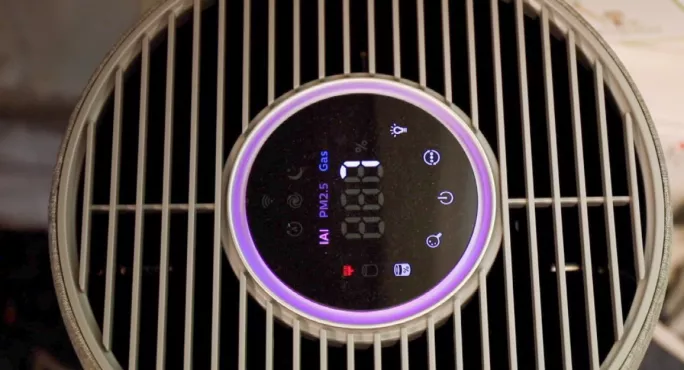Heads’ ‘shock’ over ‘expensive’ DfE air purifiers

Headteachers have questioned why they are being encouraged to buy “expensive” air filtration devices for their schools when there are cheaper models on the market.
The Department for Education yesterday launched a marketplace for schools to buy air purifiers to mitigate the spread of Covid-19.
One of the units, made by Camfil City M, costs £1,170.
The other recommended product is the Dyson Pure Cool Formaldehyde TP09 that costs £424.82.
School leaders and health experts have queried why schools are being directed to buy just two models from six suppliers when cheaper units exist on the market.
A multi-academy trust leader said: “We were really shocked to see the cost of the two products on the DfE approved framework.
“We have purchased several HEPA filtration units for less than half the cost of the Dyson units on this framework. It is difficult to understand why the DfE would signpost schools to such expensive branded products at a time when school budgets are so tight.”
- Ventilation: Changes made to improve school ventilation ‘very small’
- Vaccinations: ‘Far too early’ for most primary pupils to have vaccine
- CO2 monitors: Majority of school CO2 monitors not yet delivered
Meanwhile, Trish Greenhalgh, professor of primary health care at Queen Mary University London, posted online: “Why is [the government] recommending these overpriced filtration units for schools? Why not list other suppliers who provide equally good units at a fraction [of] the cost. Who’s lobbying whom? Asking for a friend.”
But Matthew Clements-Wheeler, education consultant and former chair of the Institute of School Business Leadership, said school leaders “are not ventilation experts” and that there were potential benefits of ordering devices through the DfE.
Firstly, he said, government procurement exercises normally exclude cheaper, or comparable, units that are only available in smaller quantities.
Also, many purifiers on the open market were “designed for small scale domestic use”, and “their quoted room volume figures don’t come near what’s needed for use in classroom [and] educational settings”, he added.
Mr Clements-Wheeler said school leaders were clearly trying to make their best “common sense” interpretation of the available guidance, but that it was apparent from social media that many were unsure of how many purifiers they needed.
He added: “Going into the last few working days of this busy autumn term, it will be hard for hard-pressed leaders to marshal a cogent, evidence-based decision about purifier procurement other than ‘we did what felt right’ - not really the calibre of decision-making the public want foisted on our schools and trusts,” he added.
Why should schools pay at all?
While the purifiers are free for special educational needs and disabilities and alternative provision settings, most schools have been advised to purchase the two models through the DfE’s online “marketplace”.
But Geoff Barton, general secretary of the Association of School and College Leaders, queried why schools were being asked to pay for them at all.
The government had acknowledged how important air purifiers were in providing them to SEND and AP settings free of charge, he added.
Asking other education settings to pay for them out of their own budgets was “unreasonable” and set “a worrying precedent”, he said.
“Schools simply do not have spare pots of money lying around to pay for air purifiers, which are not cheap to buy as single units and become very expensive when purchased in the sort of numbers that many settings need,” Mr Barton added.
He said that the government’s response to the issue had been “lethargic and insufficient from the get-go” and that if it had not been so “lax”, schools would have already had the necessary equipment to mitigate the spread of the new Omicron variant.
James Bowen, policy director for the NAHT school leaders’ union, was also concerned that not all schools were being given air filtration devices free of charge.
He said: “Given how crucial ventilation is in the fight against the spread of Covid in classrooms, we simply cannot work on the basis that only those schools that can afford air purification devices are able to access them.
“We would expect the government to be recommending devices that are both highly effective and offer good value for money,” he added.
Best value for money
Micon Metcalfe, chief financial officer at the Diocese of Westminster Academy Trust, said government frameworks will generally offer a lower price for the specific item than a school could obtain itself.
She added: “That said, schools should always conduct a best value exercise and be mindful of any procurement procedures... It’s quite possible there are lower cost items of different specification that are cheaper.”
A DfE spokesperson said: “We have provided over 300,000 carbon dioxide monitors to schools, which the vast majority are finding a helpful tool to keep classrooms well ventilated.
“For the small number of cases where poor ventilation can’t easily be solved, we are providing high-quality air-cleaning devices either for free or through an open marketplace at a competitive price, depending on a school’s level of need and proportion of vulnerable pupils and staff.
“This robust approach to ventilation sits alongside the wide range of protective measures already in place in schools, helping deliver the national priority of protecting face-to-face education.”
The DfE added that purifiers were selected based on their overall suitability for use in schools rather than a personal home environment when considering product reviews, and all bids were anonymised prior to the evaluation process.
You need a Tes subscription to read this article
Subscribe now to read this article and get other subscriber-only content:
- Unlimited access to all Tes magazine content
- Exclusive subscriber-only stories
- Award-winning email newsletters
Already a subscriber? Log in
You need a subscription to read this article
Subscribe now to read this article and get other subscriber-only content, including:
- Unlimited access to all Tes magazine content
- Exclusive subscriber-only stories
- Award-winning email newsletters
topics in this article



